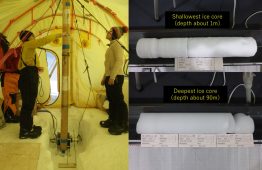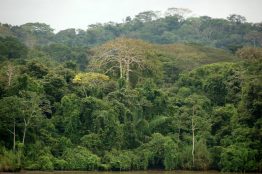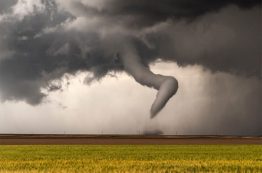The air in the United States and Western Europe is much cleaner than even a decade ago. Low-sulfur oil standards and regulations on power plants have successfully cut sulfate concentrations in the air, reducing the fine particulate matter that harms human health and cleaning up the environmental hazard of acid rain. Despite these successes, sulfate levels in the atmosphere have declined more slowly than sulfur dioxide emissions, especially in wintertime.
Read more at UW News »David Battisti named to American Academy of Arts & Sciences
David Battisti, professor of atmospheric sciences, was recognized amongst leaders in academia, business, philanthropy, the humanities and the arts elected as a 2021 fellow of the American Academy of Arts & Sciences, one of the nation’s oldest and most prestigious honorary societies. “We are honoring the excellence of these individuals, celebrating what they have achieved so far, and imagining what they will continue to accomplish,” said David Oxtoby, president of the academy.
Read more at UW News »Thicker-leaved tropical plants may flourish under climate change, which could be good news for climate
How plants will fare as carbon dioxide levels continue to rise is a tricky problem and, researchers say, especially vexing in the tropics. Some aspects of plants’ survival may get easier, some parts will get harder, and there will be species winners and losers. The resulting shifts in vegetation will help determine the future direction of climate change. To explore the question, a study led by the University of Washington looked at how tropical forests, which absorb large amounts of carbon dioxide, might adjust as CO2 continues to climb.
Read more at UW News »UW DawgCast trains future broadcasters
In pre-COVID times, a group of students would huddle around a computer practicing their skills to create professional-grade weather graphics like the ones seen on local news channels or practice giving weather reports while standing in front of a green screen in a mini-TV-studio classroom. They are part of The UW DawgCast, a year-long club offered in the Department of Atmospheric Sciences jointly with a broadcast meteorology course that welcomes weather-loving students of all majors to teach them how to read, synthesize, and communicate weather.
Read more »Rating tornado warnings charts a path to improve forecasts
The United States experiences more tornadoes than any other country, with a season that peaks in spring or summer depending on the region. Tornadoes are often deadly, especially in places where buildings can’t withstand high winds. Accurate advanced warnings can save lives. A study from the University of Washington and the National Oceanic and Atmospheric Administration describes a new way to rate and possibly improve tornado warnings.
Read more at UW News »





